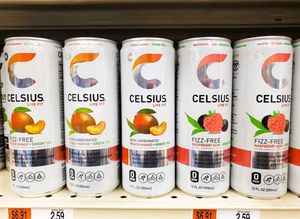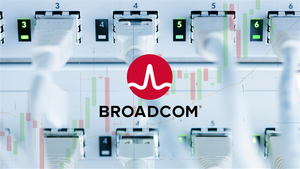The "Japan Insulin Pen Market Growth Outlook 2025-2033" has been added to ResearchAndMarkets.com's offering.
The Japan Insulin Pen Market is forecasted to rise from US$ 304.26 Million in 2024 to US$ 515.35 Million by 2033, growing at a CAGR of 6.03% in the forecast period of 2025-2033. Growth is fueled by the rising incidence of diabetes, aging population, and increasing demand for easy-to-use and effective drug delivery systems. Insulin pens provide better accuracy, convenience, and patient compliance in dosage compared to the conventional vials and syringes.
An insulin pen is a medical instrument employed for the injection of insulin in the management of diabetes. It makes insulin administration easier by integrating a pre-filled cartridge and a dial-controlled dosage, providing a more comfortable option to the conventional vials and syringes. Insulin pens are made reusable and disposable, and most contemporary models have memory tracking and Bluetooth connectivity for enhanced diabetes care.
In Japan, insulin pen use has increased enormously because the population is aging and the prevalence of diabetes is high. Patients in Japan appreciate precision, convenience, and mobility - trading points insulin pens offer. The Japanese healthcare system also encourages patient education and access to current diabetes management tools, and this has facilitated the acceptance of insulin pens among patients and healthcare providers alike. Technologies like smart insulin pens and digital connectivity with health monitoring applications are also increasing their pace. With the growing awareness of diabetes self-management, insulin pens remain the most used method of insulin administration in Japan.
Drivers of Growth in the Japan Insulin Pen Market
Increased Diabetes Incidence and Aging Population
Japan has the highest percentage of elderly citizens in the world, with more than 29% of its population being 65 years or older. Aging is a major risk factor for type 2 diabetes, which demands lifelong insulin therapy. The increasing number of diabetes patients has resulted in the demand for simpler and more accurate ways to deliver insulin. Insulin pens provide increased ease of use and minimize errors of administration, particularly by elderly patients. Their comfort design and lower injection pain are especially attractive for the elderly, making insulin pens a compulsory component of diabetes therapy in Japan's aging population.
Move Towards Easy and Convenient Delivery Devices
Conventional syringes and vials are being displaced by insulin pens because they are simple, convenient, and precise. Japanese consumers prefer private and efficient delivery methods that do not necessitate professional help. Pre-filled, compact insulin pens minimize dosing mistakes - optimal for use in the home and at work. Advances in technology like memory features, dose monitoring, and wireless connectivity are further driving the popularity of insulin pens. Patient-friendly innovation is promoting the use of insulin therapy at an earlier age and more consistently, leading to better diabetes control and increased market growth.
Fitabeo Therapeutics granted a Japanese patent for its novel drug delivery film, Spherionex, in August 2024. The controlled-release system increases the accuracy of treatment of chronic and acute diseases and greatly enhances patient outcomes.
Government Reimbursement and Support Policies
Japan's healthcare system gives comprehensive support for the management of chronic disease, such as subsidies and insurance coverage of insulin delivery devices. Insulin pens are generally reimbursed under Japan's national health insurance program and are hence covered for a significant proportion of diabetics. Early diagnosis and treatment compliance are also encouraged by the government through campaigns and education programs. These programs promote the usage of advanced insulin delivery technologies, thus lowering long-term complications and healthcare expenditure. The pro-regulatory climate and government-sponsored affordability have made a huge difference in the uptake of insulin pens in hospitals, clinics, and homecare facilities.
Difficulty in the Japan Insulin Pen Market
High Cost of Sophisticated Insulin Pen Technologies
While Japan offers insurance reimbursement for insulin pens, the high initial cost of high-end devices - such as smartphone or Bluetooth-capable pens - remains a deterrent for certain consumers. These pens provide data tracking and mobile app integration, but do not always have full insurance coverage. Also, the ongoing use of disposable pen needles or disposable pens contributes to the ongoing cost. For low-income patients or patients in rural settings, affordability may be a barrier to consistent use. Manufacturers need to overcome price sensitivity and coordinate with policymakers to increase access to high-end insulin delivery systems without sacrificing care quality.
Preference for Traditional Treatment in Rural Areas
In rural regions of Japan, where healthcare facilities are inaccessible, patients and practitioners might still be using traditional means such as insulin vials and syringes. Hesitance to adapt, low exposure to new devices, and insufficient digital education can postpone the implementation of insulin pens. Moreover, elderly people in rural areas might be hesitant toward current devices or be inadequately trained. It produces a digital and educationally determined market assessment difference between urban and rural locations, calling for specific awareness and access interventions to close the gap.
Key Attributes:
| Report Attribute | Details |
| No. of Pages | 200 |
| Forecast Period | 2024 - 2033 |
| Estimated Market Value (USD) in 2024 | $304.26 Million |
| Forecasted Market Value (USD) by 2033 | $515.35 Million |
| Compound Annual Growth Rate | 6.0% |
| Regions Covered | Japan |
Key Topics Covered:
1. Introduction
2. Research & Methodology
2.1 Data Source
2.1.1 Primary Sources
2.1.2 Secondary Sources
2.2 Research Approach
2.2.1 Top-Down Approach
2.2.2 Bottom-Up Approach
2.3 Forecast Projection Methodology
3. Executive Summary
4. Market Dynamics
4.1 Growth Drivers
4.2 Challenges
5. Japan Insulin Pen Market
5.1 Historical Market Trends
5.2 Market Forecast
6. Market Share Analysis
6.1 By Products
6.2 By Disease Types
6.3 By Distribution Channels
6.4 By City
7. Product
7.1 Disposable Insulin Pen
7.2 Reusable Insulin Pen
8. Disease Types
8.1 Type 1 Diabetes
8.2 Type 2 Diabetes
9. Distribution Channels
9.1 Hospitals
9.2 Homecare Settings
9.3 Others
10. Top 10 City
10.1 Tokyo
10.2 Kansai
10.3 Aichi
10.4 Kanagawa
10.5 Saitama
10.6 Hyogo
10.7 Chiba
10.8 Hokkaido
10.9 Fukuoka
10.10 Shizuoka
11. Reimbursement Policies
12. Value Chain Analysis
13. Porter's Five Forces Analysis
13.1 Bargaining Power of Buyers
13.2 Bargaining Power of Suppliers
13.3 Degree of Competition
13.4 Threat of New Entrants
13.5 Threat of Substitutes
14. SWOT Analysis
14.1 Strength
14.2 Weakness
14.3 Opportunity
14.4 Threats
15. Pricing Benchmark Analysis
15.1 B. Braun Melsungen AG
15.2 Eli Lilly and Company
15.3 Becton, Dickinson (BD)
15.4 Novo Nordisk A/S
15.5 Ypsomed AG
15.6 Terumo Corporation
15.7 Sanofi
15.8 Julphar
16. Key Players Analysis
- B. Braun Melsungen AG
- Eli Lilly and Company
- Becton, Dickinson (BD)
- Novo Nordisk A/S
- Ypsomed AG
- Terumo Corporation
- Sanofi
- Julphar
For more information about this report visit https://www.researchandmarkets.com/r/cffhx3
About ResearchAndMarkets.com
ResearchAndMarkets.com is the world's leading source for international market research reports and market data. We provide you with the latest data on international and regional markets, key industries, the top companies, new products and the latest trends.
View source version on businesswire.com: https://www.businesswire.com/news/home/20250909243315/en/
Contacts
ResearchAndMarkets.com
Laura Wood, Senior Press Manager
press@researchandmarkets.com
For E.S.T Office Hours Call 1-917-300-0470
For U.S./ CAN Toll Free Call 1-800-526-8630
For GMT Office Hours Call +353-1-416-8900






